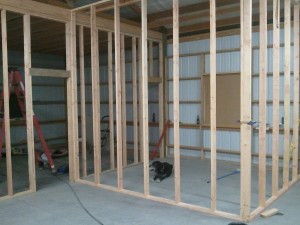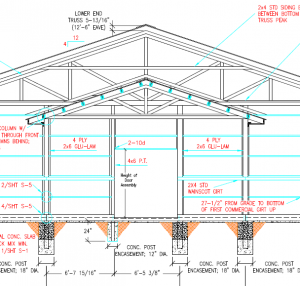A Miracle Cure to Prevent Twisted Timber Columns

In 1960 Chubby Checker did a cover of Hank Ballard and the Midnighters 1959 song “The Twist”. Checker’s cover reached Number One on Billboard’s Hot 100 both in 1960 and again in 1962, becoming the only single to reach number one in two different chart runs.
While “The Twist” was a musical hit, twisting in lumber poses concerns, if not panic.
It would be all well and good if trees could be trained to grow so as they only produced straight-grained lumber. Fat chance of this happening. In fact, straight grained lumber is by far an exception, rather than a rule.
Instead, spiral grain is an expected pattern – where this term describes a helical orientation of tree fibers giving a log a twisted appearance after bark has been removed. This twisted appearance is even more highlighted by surface checks, following grain of fiber, making spiral grain very obvious in some standing dead trees and on utility poles and posts.
This spiral may be in either direction, be fairly constant in any one tree or may change with tree age. In some trees, there may even be a reversal of spiral in successive zones of growth forming an interlocking grain. Lumber twist is a function of the degree of Greater spiral increases chances you will see lumber twist.
Most typically prevailing spiral orientation is in a left direction near a tree’s pith, with angle increasing sharply in first-formed rings in juvenile wood. This gradually decreases to a straight-grain then is followed by a gradual change to a right-angle spiral. Trees with left spiral do tend to twist more with changes in moisture content, than those with both left and right-spiraled grains.
Spiral grain may seriously reduce strength and stiffness of lumber milled from a given tree. This “slope of grain” in sawn lumber is considered as a defect, and is a resultant of natural spiraling.
For purposes of visual lumber grading rules, slope of grain is wood fiber deviation from a line parallel to edges of a piece. This deviation is expressed as a ratio such as a slope of grain of 1 in 8, 1 in 10, 1 in 12 and 1 in 15. Slope of grain as measured is representative of general fiber slope and local deviations are disregarded. Bigger bottom numbers would express straighter grain. Less lumber twist gives you stronger boards.
Typical No. 2 grade framing lumber allows for a slope of grain of up to 1 in 8 (an inch of slope for every eight inches of board length). This consideration takes into account how this defect accordingly adjusts allowable strength values used in engineering design.
Now – a “miracle cure” for twist!
In this article’s photo, a builder has convinced his client by taking an inch off each corner of his building’s posts (at a 45 degree angle full length) it would somehow keep them from twisting.
And his client not only believed it to be true – so much so as to help his builder cut off each corner!










Hi Mark,
My Father always chamfered the corners of exterior columns and landscape timbers and I never asked him why, I grew up with the process and still use to this day, none of my work ever twisted and now I know why.
My Father was a Swiss Carpenter.
Sincerely,
Bryan Zuppiger
In my humble opinion your father was purely lucky as lopping off those corners should have nothing to do with prevention of twists.
I’ve been building for over 40 years, chamfering the corners of posts and beams makes for a nicer look, but the best way to prevent twisting, and I’m sure your father would agree, is to be VERY selective of the wood you use.
Makes me a proponent of glulaminated column for post frame buildings.